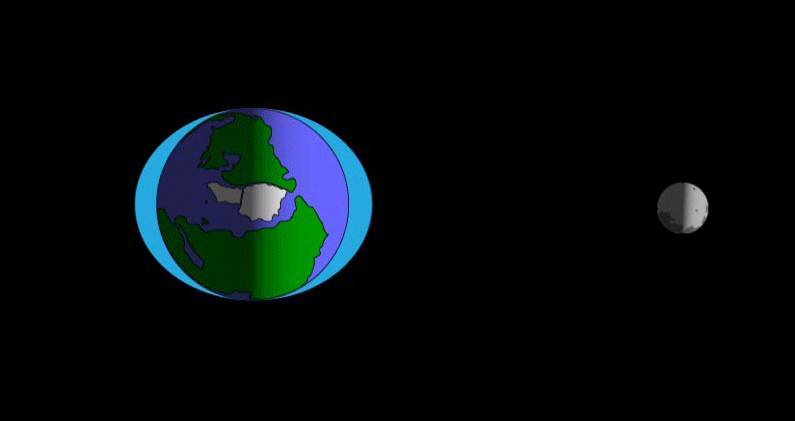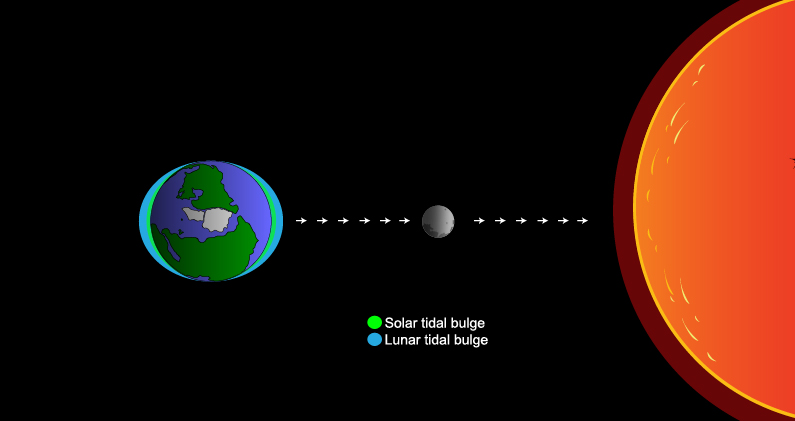King Tides have some Canadians on high alert, here's why
Meteorologist/Science Writer
Tuesday, December 5, 2017, 2:40 PM - As we head into the time of year when king tides become a concern for the Vancouver area, residents are preparing for themselves for the worst. So, what are "king tides" and why do they cause such concern?
This week, residents of B.C.'s Lower Mainland are laying down sandbags, in the hopes of warding off any potential flooding that may occur due to the return of the king tides.
According to the website of Fisheries and Oceans Canada, tides in the Vancouver area are expected to reach a height of around 4.5 metres over the next few days, and they will likely stay relatively high for the rest of the month, and then peak again in the first week of January, as the region enters a "season of king tides".
What's going on here? What are king tides?
Tides are a regular fact of life for Canada's coastal regions. The waters along our shores advance and retreat twice every day, and these tides swell even higher and drop even lower twice every month, and there's even a cycle that you need a yearly calendar to track.
The cause of all of these tidal cycles is the complex interplay between the gravitational forces of the Earth, the Moon and the Sun, which result in tidal forces.
With the Moon orbiting around Earth, the planet itself and everything on the surface feels a slight pull of gravity in the Moon's direction. This pull is strongest on the side of Earth pointing directly at the Moon and weakest on the side directly opposite the Moon. The difference between the gravitational pull of the Moon on both sides of Earth causes a slight imbalance in the forces on either side of the planet. These forces are too weak for us to feel them, or for them to have much of an effect on anything solid.
When it comes to the kilometres-deep liquid water of Earth's oceans, however, the forces acting on all the individual water molecules adds up. The imbalance in forces on the side closest to the Moon causes the water on that side to be pulled towards the Moon. Meanwhile, the imbalance on the opposite side of earth causes the water there to be pulled away from the Moon.

The lunar tidal bulge in Earth's oceans. Not to scale. Credit: NASA Scijinks
This results in the tidal bulge on either side of the Earth, as shown above.
As the Earth rotates through its 24 hour day, that tidal bulge remains pointed along the same axis, and this translates into a twice-daily cycle of tides.

How the lunar tidal bulge changes during each rotation of the Earth. Not to scale. Credit: NASA Scijinks
At the same time, the Moon is orbiting around the Earth, tracing out an elliptical path on a 29-day schedule. This change in the Moon's position throughout a month causes the timing of the high and low tides to advance by a bit each day. It also produces slightly higher tides, overall, when the Moon is moving through its closest point to Earth (perigee) and slightly lower tides, overall, when it is moving through its farthest point from Earth (apogee). While each orbit of the Moon has a corresponding perigee and apogee, some perigees are closer and some apogees are farther away, thus adding some variation into the tidal cycle.
With the Earth and the Moon always in motion around the Sun, our home star exerts its own influence on the oceans as well. While this influence isn't as strong as the Moon's - the Sun may be bigger, but it's much farther away - it still results in a second tidal bulge that's always deeper on the day and night sides of the planet and shallower along the terminator between day and night.
The combination of these two tidal bulges, as they slip in and out of alignment with each other, are responsible for the highest tides we see.
Twice every month, at the time of the Full Moon and the New Moon, Earth, the Moon and the Sun all line up with each other. This is called syzygy (pronounced 'si-zi-jee'), and it causes the tidal bulges from the Earth and Sun to line up, and coastal regions see higher tides than usual - known as spring tides.

The combination of lunar and solar tidal bulges during a New Moon. The same configuration of tidal bulges occurs during a Full Moon as well. Not to scale. Credit: NASA Scijinks, with edits by author
As all of these different cycles and shifting influences remain in play throughout the year, the very highest tides happen when all the collective forces line up best.
A few times each year, when the Moon happens to be passing through its perigee for that orbit, at the either at same time that a spring tide is occurring or very close to it, it produces some of the highest tides of the year, known as perigean spring tides.
This is what many places on Earth, such as Vancouver and B.C.'s Lower Mainland, are experiencing in the days to come, as we just had our closest perigee Full Moon of 2017, on Sunday night.
Thus, over the next week they will see their King Tide, their absolute highest tide for 2017.
A Season of King Tides
The December 3 supermoon may have been the closest perigee Full Moon of 2017, but the very next Full Moon, on the night of January 1-2, 2018, will be next year's perigee Full Moon, and it'll be even closer to Earth. Following closely after, at the end of January, there will be yet another 'supermoon', rounding out a trilogy (see the video, below).
In amongst all of these supermoons, each of which will have a strong influence on Earth's tides, the Earth itself will be passing through its point to the Sun - perihelion - just after midnight, on the night of January 2-3. Thus, the solar tidal bulge is getting deeper the closer we get to perihelion, and this will enhance the deeper lunar tidal bulges, likely putting the king tides for 2017 and 2018 back-to-back.
Sources: NASA/NOAA | Fisheries and Oceans Canada | With files from The Weather Network



